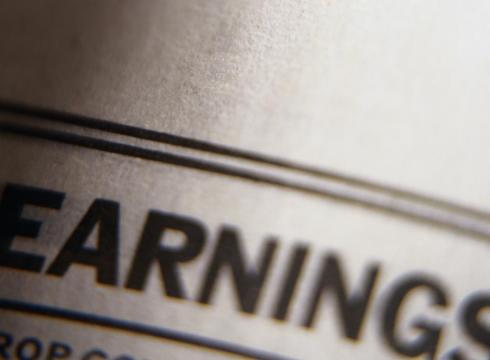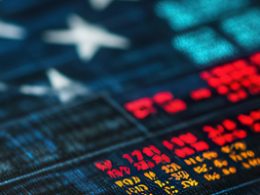by Jeffrey Kleintop, CFA® Managing Director, Chief Global Investment Strategist, Michelle Gibley, & Heather O'Leary, Charles Schwab & Co., Inc.
Surprises most often are hiding in plain sight. Being aware and prepared with a plan for the unexpected are keys to achieving goals.
- Tariffs quickly come and go
- Shifts from rate cuts to rate hikes
- Sentiment in Europe rebounds
- Supply chains could be disrupted
- China recovers
Tariffs quickly come and go
This negotiating tactic is not unique to the U.S. On October 29 in Europe, an eye-popping 45% tariff was imposed on some Chinese made electric vehicles (EVs). This was rapidly followed by rounds of talks between European and Chinese trade representatives. While there is not yet a final agreement, the negotiations have led to a technical consensus which scraps the tariffs in exchange for a minimum selling price on imported EVs, according to comments by the chairman of the European Parliament's trade committee.
An even more recent example is the late November announcement of 25% tariffs on Mexico and Canada and an additional 10% tariff on China to be implemented on Trump's first day in office unless these nations take further steps to address drug trafficking and illegal border crossings. The threat echoes the one in May 2019, when President Trump announced 25% tariffs on Mexico, with 5% to be imposed on June 10 and 5% increases each month until reaching 25%, unless Mexico stopped the flow of illegal immigration into the United States. That threat was never imposed. It was dropped by Trump less than a month later after Mexico agreed to pursue an enforcement surge to curb irregular migration. In response to the November announcement, Canadian President Trudeau met with Trump and Mexican President Sheinbaum sent a letter, both seeking to cooperate on the stated issues of drug trafficking and illegal border crossings.
Tariffs may still rise, but it seems that extreme tariff announcements may be used by Trump as a tool of statecraft to extract actions or concessions, rather than tools of economic policy. It is worth noting that Trump doesn't have a mandate on implementing tariffs, based on polling data of voters' intentions. Polling data shows voters expect Trump to focus on inflation (35%)—which tariffs might bring if implemented at the level they were proposed—not on implementing tariffs (only 1%). The uncertainty over tariffs being announced and then potentially dropped or reduced following negotiations could create market volatility.

Source: IPSOS Core Political November 2024.
Shifts from rate cuts to rate hikes
Market-expected change in central bank policy rate in two years' time

Source: Charles Schwab, Intercontinental Exchange, European Central Bank, Bank of England, CME, Federal Reserve, data as of 12/6/2024.
Futures, and Futures options trading involves substantial risk and is not suitable for all investors. Please read the Risk Disclosure Statement for Futures and Options prior to trading futures products.
Brazil: Ahead of the curve?

Source: Charles Schwab, Bloomberg data as of 11/26/2024.
Sentiment in Europe rebounds
German business outlook improving?

Source: Charles Schwab, IFO Institute, Bloomberg data as of 12/6/2024.
Valuations for eurozone stocks remain depressed, trading at a price-to-earnings ratio of 13 times next 12 months consensus expected earnings and at a 40% discount to the S&P 500. This is a much bigger discount than the historical average. Any rebound in sentiment could boost valuations, with each one point of increase estimated to boosting returns by 7%.
Eurozone stocks trade at a steep discount to the S&P 500

Source: Charles Schwab, FactSet, as of 12/4/2024.
Performance is no guarantee of future results.
Supply chains could be disrupted
- Policy risks - Deportation of Mexican-born population from the U.S. could disrupt supply chains on labor shortages in some industries and global increases in tariffs could result in diversions in trade.
- Weather risks - Hurricane Helene flooded Spruce Pine, NC in September 2024, the location of nearly the entire global supply of high-purity quartz—the kind needed to make the crucibles that hold the molten silicon as it is formed into a silicon wafer. Luckily the mines were brought back online after just four weeks and the world dodged a potentially severe disruption of the global supply chain for semiconductors.
- Geopolitical risks - While the conflicts surrounding Ukraine and Israel continue to exact an immeasurable human toll, the market and economic impacts have been limited, with oil prices wrapping up the year close to their lows. While ceasefire agreements may take place in 2025, the conflicts could linger on or even expand. Should oil facilities in Russia or Iran be targeted, oil prices may surge on supply shocks and act as a drag on growth and a boost to inflation.
- Technology-related outages - The cyberattack on the Colonial Pipeline in the U.S. in 2021, and IT outages such as the CrowdStrike faulty system update in July 2024, could derail the flow of energy or information.
With global trade volumes having recently climbed to new all-time highs after two years of stagnation, supply chains may be more vulnerable to any disruption. Where and when these disruptions could occur are naturally unpredictable and could come out of seemingly nowhere to surprise markets, reduce growth and boost inflation.
Global trade volume recently hit a new all-time high

Source: Charles Schwab, CPB Netherlands Bureau for Economic Policy Analysis, Bloomberg data as of 12/6/2025.
China recovers
2017's "surprising" performance

Source: Charles Schwab, Bloomberg data as of 12/6/2024.
Indexes are unmanaged, do not incur management fees, costs, and expenses and cannot be invested in directly. Past performance is no guarantee of future results.
Chinese stocks have surprised to the upside–and downside–in the past. While a fiscal stimulus equal in size to the 2017 package is unlikely, stocks may rise on a much smaller package if it includes concrete measures to boost consumption and halt the property market downturn. However, stocks could slip again if hopes fade and China under-delivers on its promises.
Be prepared
Michelle Gibley, CFA®, Director of International Research, and Heather O'Leary, Senior Global Investment Research Analyst, contributed to this report.













